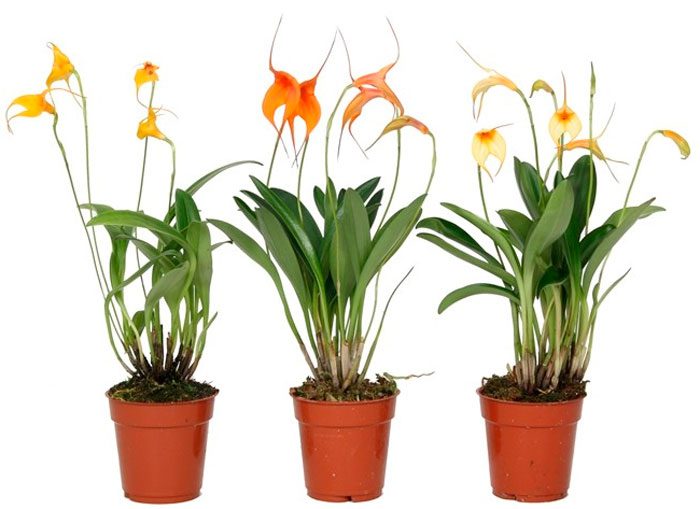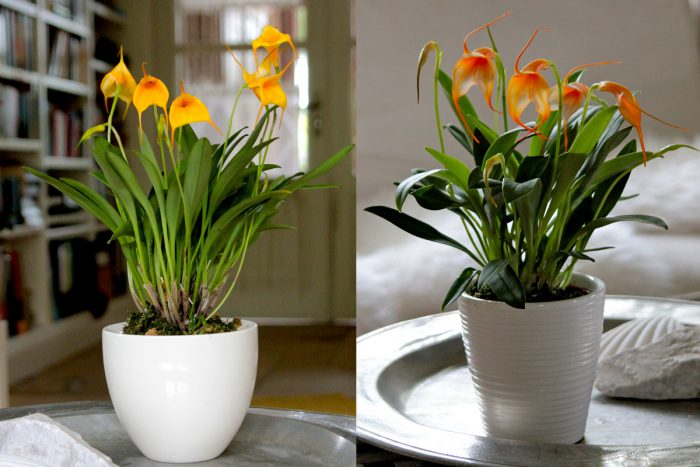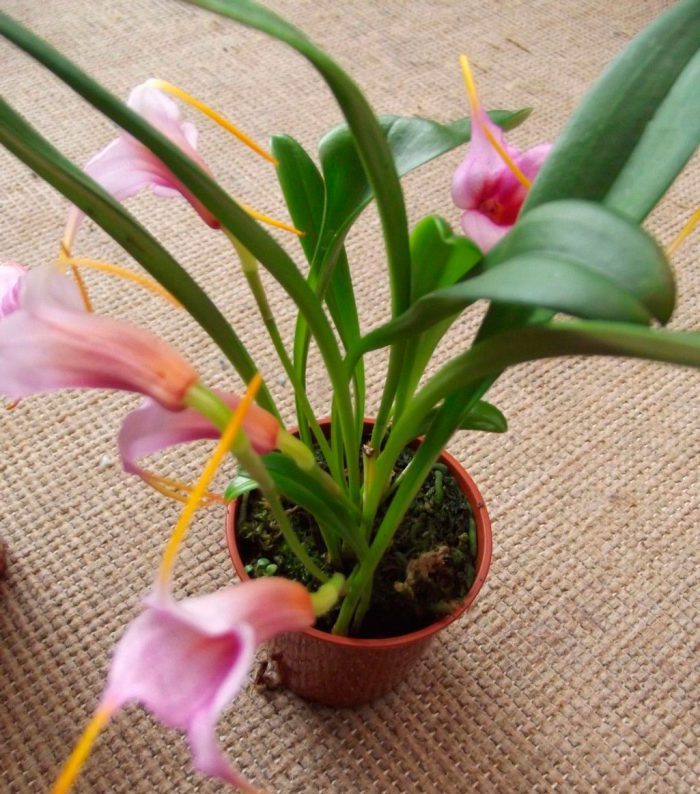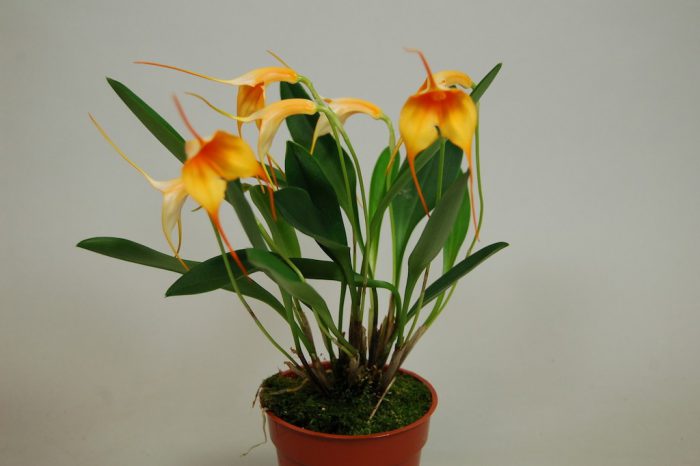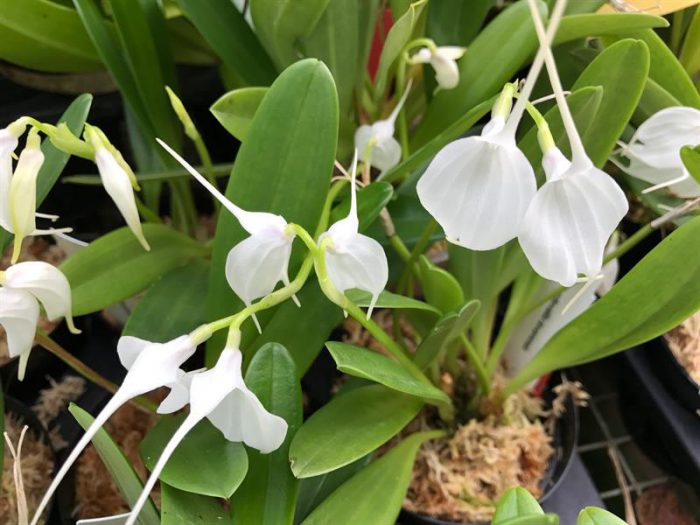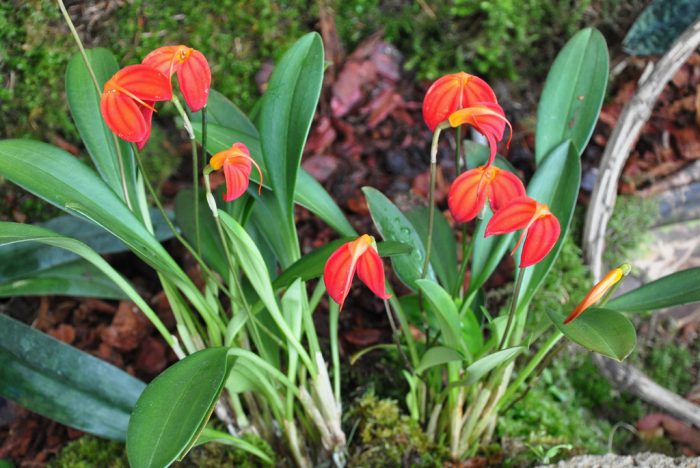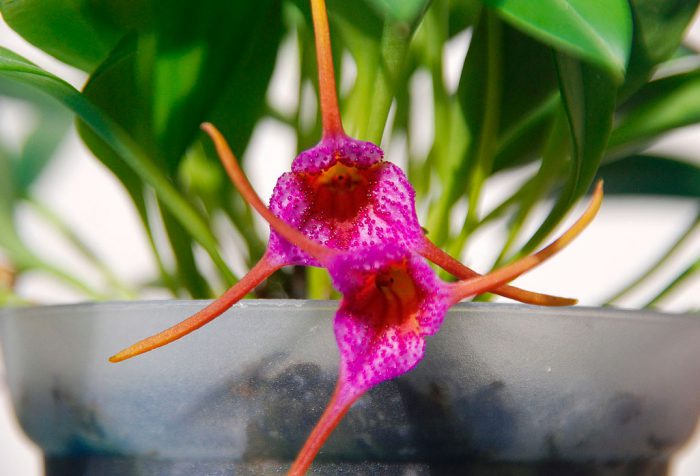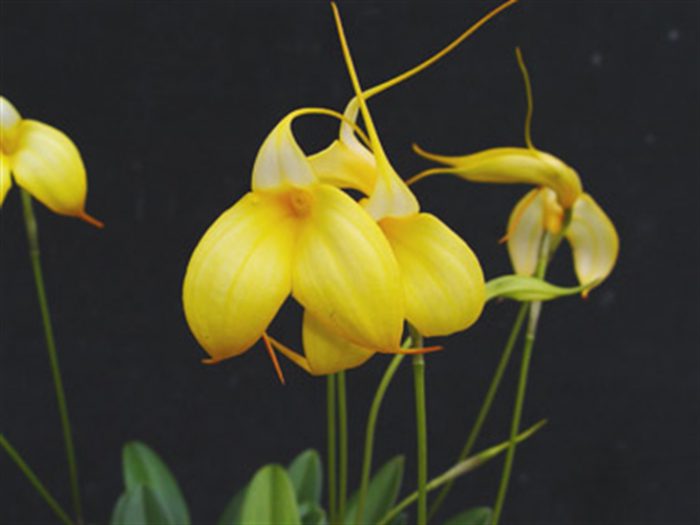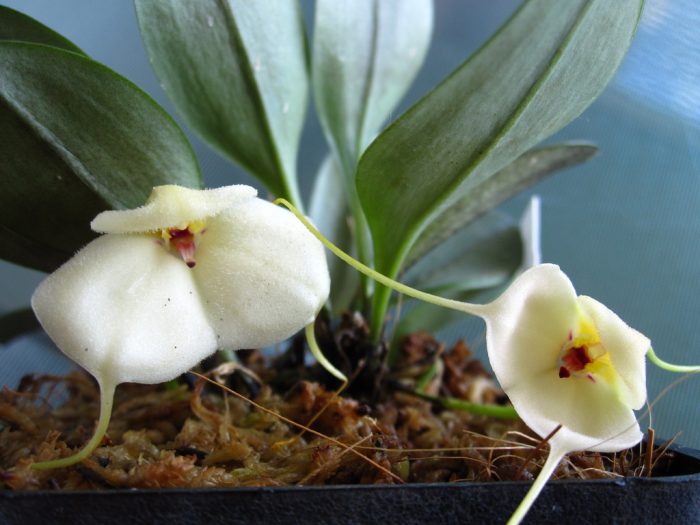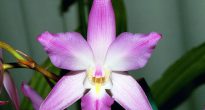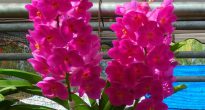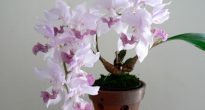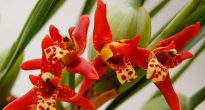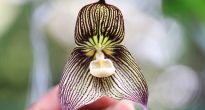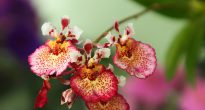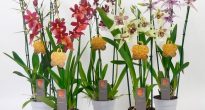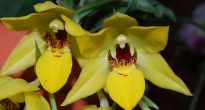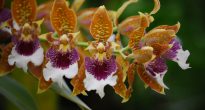One of the largest genera in the orchid family is masdevallia (Masdevallia). It unites more than 500 species of plants of not very large size, which are represented by lithophytes, epiphytes and terrestrial ones. Although there are many species in this genus, its distribution is rather limited. So, in nature, these plants can be found in the southern part of Brazil, in Mexico, Andes, Bolivia, Colombia, Peru, as well as in Ecuador.
Representatives of this genus differ from all other orchids in a shortened creeping rhizome, thin, highly reduced pseudobulbs, having 1 hard, fleshy petiole of a dark green color, as well as the shape of the flowers. The development of peduncles occurs at the base of the pseudobulbs, while either a small-flowered inflorescence in the form of a brush or a single flower is located on them. Corolla consists of 3 rather large sepals and 1 small petal (lip). Sepals (often confused with petals) in many species grow together to a greater or lesser extent at the base, most often as a result of this a tube is formed. In this case, the tips of the sepals continue with very long filamentary processes. The only clearly distinguishable petal is the lip, which can be clearly visible and in the form of a tongue, as well as be relatively small and completely hidden in a narrow pharynx. There are also 2 real petals, but due to their scanty size, they are almost invisible. There are species in which the flowers are pronounced zygomorphic, while in others they have triple symmetry. Sepals can be of very different sizes and colors. The plant can bloom for 3-4 weeks (sometimes a little longer).
Masdevallia orchid care at home
Each species has some features of indoor care, which is closely related to the conditions in which this plant grows in nature. For example, there are light-loving or moisture-loving plants, or those that prefer a cool content. However, those species that are currently grown by most flower growers have some similar rules for care.
Illumination
Pretty light-requiring. Lighting should be bright, but diffuse. Direct sunlight is not allowed. It is recommended to place the flower on the west or east window. At the same time, when placing on the north orientation window, you will need backlighting, and on the south one - shading from the direct rays of the sun. Supplementary lighting must be used in autumn and winter, while the duration of daylight hours throughout the year is from 10 to 12 hours.
Temperature regime
Most of the species need a moderate-cool temperature regime. At the same time, daily temperature drops are mandatory for the plant. So, in the summer, it is best if the day is from 15 to 23 degrees, and at night - from 10 to 18 degrees. In winter, Masdevallia needs coolness - from 10 to 15 degrees.
After there is no threat of frost at night in springtime, the flower can be transferred to fresh air (to the balcony, to the garden), but it must be shaded from the direct rays of the sun.
Earth mixture
Pots are suitable for growing, as well as blocks. It is better to take the pot from transparent plastic, while additional perforation must be made on the walls, which makes the aeration of the root system much better. The prepared container must be filled with pieces of pine bark, while their size depends on the root system of the plants. So, for example, if the roots are thick, then the pieces of bark can be relatively large, and the fine fraction is suitable for thin roots. It is recommended to mix the bark with sphagnum (optional), and it must also be placed on the surface of the substrate in order to avoid too rapid evaporation of moisture.
Large pieces of pine bark are used as blocks. Having previously made a cushion of moss, the roots are fixed on the surface of the block. A layer of sphagnum should also be placed on top of the roots.
How to water
Watering should be done often and very abundantly. To do this, take soft filtered tepid (about 40 degrees) water. Watering experts advise to carry out the method of immersion. In a bowl filled with water, you need to lower the container or block and leave for a third of an hour, until the roots and bark are saturated with moisture. Then the orchid is transferred to its usual place.
Also, the plant will be very useful "hot shower" (about 45 degrees). In the event that the water in the water supply system is not too hard, it is recommended to systematically wash the flower right under the tap in the bathroom. Or you can take a watering can for this, into which you should pour soft filtered water.
It is necessary to water the plant systematically, without waiting for the bark to dry, since there is no velamen on the surface of the roots, which helps to preserve moisture. However, overflow is quite harmful, as it can provoke the formation of rot.
Humidity
Humidity is in direct proportion to temperature conditions. If the room is cool, then a humidity of about 50 percent is suitable, in a warm room, and even more so in the summer heat, the humidity should be at the level of 80-90 percent. You can increase the humidity in the room with household humidifiers and steam generators, but it is best to use orchidariums for growing. You can also increase the moisture content by frequently dampening the foliage with a sprayer. For this, lukewarm soft water is used.
For flowers of miniature species, specialized hanging glass containers are often used. It is relatively easy to maintain a microclimate favorable for plant growth and development in them.
Transplant features
Transplanted only when necessary. So, if the plant has grown out of a pot or the block has become small for it, as well as in the case of salinization or decomposition of the substrate. Transplanted immediately after flowering.
Fertilizer
The flower is fertilized once every 3 or 4 weeks. To do this, use a special fertilizer for orchids, take half or a third of the dose recommended on the package.Fertilizer can be dissolved in water for spraying or irrigation.
Reproduction methods
In indoor conditions, you can propagate such a flower by dividing the overgrown bush into several parts.
Pests and diseases
If you adhere to the rules for caring for such an orchid, then it will be resistant to both diseases and pests. If the temperature regime is incorrectly selected, as well as in case of untimely watering, with low or too high humidity, various fungal diseases appear, provoking the appearance of decay and leaf spotting. Direct sunlight can burn foliage.
Video "How to take good care"
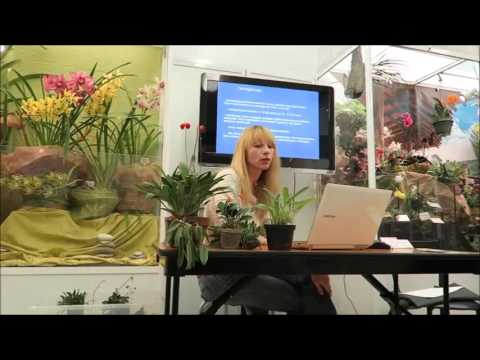

Watch this video on YouTube
Main types
Masdevallia is still relatively poorly distributed among domestic flower growers, and they are little known to them. But at the same time, from a huge number of species, you can definitely choose something to your liking.
Masdevallia commodity (Masdevallia tovarensis)
It is currently the most popular species in culture. This plant is native to the humid forests of Venezuela and Colombia, while it prefers to grow in the cracks in the bark of trees or in their branches. Lanceolate-oval or oval leaves are slightly folded along the central vein. Peduncles are up to 15 centimeters long, and most often they are taller than the plant itself. Inflorescences in the form of a brush consist of 2-7 translucent snow-white flowers, in which dense veins are clearly distinguishable. Pronounced zygomorphic flowers have almost completely fused 2 large sepals located at the bottom; only the tips remain free, which turn into elongated thin processes. The 3rd sepal is at the top and is very small in size, but it has a long filamentous process that can be bent back or look vertically upwards, completely overlapping the lower part of the flower. The sepal, together with its process, is usually 3 centimeters long. The smell of the flowers is rather weak.
Masdevallia fiery red (Masdevallia ignea)
This type is one of the most spectacular. This flower comes from the forest slopes of the Eastern Cordilleras, which is located in Colombia. The leaflets have a different shape from oblong-lanceolate to elliptical-lanceolate, while their lower part is narrowly wedge-shaped. Long (up to 35 centimeters) peduncles are much higher than the plant itself, and there are single flowers of a rather large size (up to 8 centimeters in diameter) on them. The flower is clearly zygomorphic. The pair of sepals at the bottom are half fused. They have the shape of asymmetrical wide ovals and do not have very large cusps at the tips. The color of the flowers is similar to the color of the flame. So, on a deep red background, there are 4 wide orange stripes that come out of the base. The 3rd sepal, which is located in the upper part of the flower, is a threadlike narrow tail directed straight down. It seems to lie on the surface of the flower and at the same time covers its mouth.
Masdevallia glandular (Masdevallia glandulosa)
This compact and very beautiful plant is native to Ecuador and Peru. Inverse-lanceolate leaflets are noticeably elongated at the base. Short peduncles in length reach only 4 centimeters, while the leaves are 2 times longer. Since this species has a lodging nature of growth, the peduncles rise above the leaf rosette and make it possible to admire the single bell-shaped flowers. The calyx, which has 3 axes of symmetry, consists of 3 sepals, which are almost completely fused. Their free, rather wide open, triangular teeth end in thin filiform "tails" that are somewhat longer than the sepals. The lip is almost impossible to see, as it is deep in the bell-shaped tube.The outer part of the sepals has a light pink color, and the ends of the tails, as well as the surface in the depth of the tube, are painted yellow. The inner surface of the sepals is strewn with a large number of small, protruding balls (glands), painted in purple. If you look at them from afar, they look like very bright spots. The name of this species is precisely related to this feature of the plant.
Such a flower is not only very effective, but also has a strong aroma (smells like clove spice). This species is one of the most fragrant in the genus.
Masdevallia triangular (Masdevallia triangularis)
This plant can be found in nature in Ecuador, Venezuela, Colombia, and Peru. Leaflets narrowed to the base, have an obovate shape. Erect peduncles are not much longer than foliage and are 15 centimeters long. Single flowers are zygomorphic. All 3 sepals have the same triangle shape, while they are fused to half. In 2 sepals located below, the tops seem to sag due to the severity of filiform, rather long "tails". At the sepal located on top, such a "tail" looks straight up. If we take into account these "tails", then the diameter of the flower can be 17 centimeters. It is colored deep yellow and has longitudinal burgundy stripes in the central part of the sepal. There are also small burgundy dots on the surface of the sepals. "Ponytails" are also painted in burgundy. A tiny lip is difficult to see even in a fully open mouth.
This species is one of those whose flowers smell very bad. They have a strong rotting smell.
Masdevallia davisii
The birthplace of the plant is Peru, where the local population calls it solar. Thus, this orchid was named because of its rich yellow flowers. They consist of 3 sepals. 2 broad-lanceolate sepals, located below, are 2/3 fused and have small outgrowth horns at the tips. Separate 3rd triangular sepal located at the top, rather small in size, it gradually tapers and has a threadlike thickness at the tip. Single small (up to 5 centimeters in diameter) fragrant flowers grow on rather long peduncles, which can reach 25 centimeters in height.
Masdevallia andreettaeana
This is a miniature and very beautiful plant. It comes from northeastern Peru and southeastern Ecuador. The rosette, consisting of leaves, has a compact size of 3 to 5 centimeters. The leaflets are broadly oval, and near the petiole there is a slight sharpening. The peduncle reaches a height of 3–3.5 centimeters. There is a single flower on it, which is relatively large (about 3 centimeters in diameter) and painted white. 2 sepals below, completely fused. They have the shape of an isosceles triangle, while their tops are curved outward, and at the tips there are long "tails" of a thread-like shape. The free, oval sepal located at the top is smaller than the lower ones. This sepal seems to hang over the calyx, while covering its part with itself. It has a rather long "tail", which is strongly bent back and tightly pressed against the flower from the outside. The set of glands located on the inner surface of the sepals (outwardly similar to the surface of a dense fur coat), give the flower a special chic. Because of this, it seems that the flower is very fluffy and soft, and the sepals are similar to small fur pads. This species stands out from the rest in that it has small real yellow petals that protrude from the open mouth. The lip is similar in size to the petals and looks like an elongated tongue.
Masdevallia erinacea (Masdevallia erinacea)
The homeland of this flower is the rain forests of Panama, Ecuador, Costa Rica and Colombia.This miniature plant does not exceed the size of a matchbox. Narrow leaves have a belt-like shape, while the peduncles are 2–2.5 times longer than them, and their height can reach from 4 to 7 centimeters. Single flowers have a corolla with a diameter of 15 millimeters. All 3 sepals are completely fused together. They formed a not very deep round calyx with a small tongue-lip and 3 threadlike outgrowths. These uniformly thin outgrowths from the base to the middle are colored greenish-white, and then they become rather elongated ellipsoids and have a rich yellow color. The outer surface of the corolla is painted in a deep yellow color, while the inner surface is covered with many reddish spots. On the surface of the entire flower there are sparse protruding glands, somewhat similar to small hairs.

